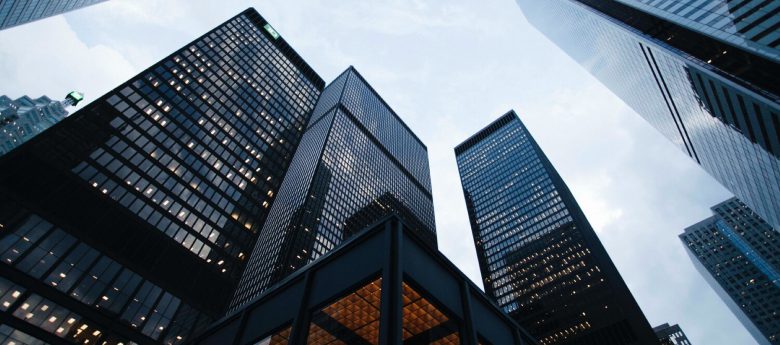The New Normal: Adjusting IAQ Practices

The novel COVID-19 pandemic has significantly impacted the built environment as a whole, causing great disruption to how buildings previously managed their systems and operations. This new normal will cause building managers to follow stricter guidelines and safety measures and show occupants that safety and protection is of the utmost importance. In addition to frequent cleaning and disinfection, building managers must act as quickly and efficiently as possible to achieve a particular level of indoor air quality (IAQ).
Maintaining high levels of IAQ can minimize the spread of highly transmissible viruses like COVID-19, by either removing or diluting infected droplets. Depending on the approach taken, improving IAQ can be costly, requiring building managers to find a balance that fits their budget limitations. This new emphasis on IAQ will no doubt transform the status quo of how buildings operate for years to come. It can be daunting for building owners to determine where to begin, but by following a few key steps, navigation is simplified.
Assessing Solutions to Achieve IAQ Goals
First, achieving optimal IAQ involves the evaluation of several factors, including ventilation rates, particulate capture and filtration, and seclusion from sources of pollutants, biological contamination and odor sources. It’s important to understand the key role the HVAC system plays in transmission of this virus. Next, think about how much outside air is needed for the building and determine the budget available to achieve this. Lastly, using this information, building managers can decide which solutions would be best for the building based on size, budget and willingness to adopt new technologies.
Recently, the American Society of Heating, Refrigerating and Air-Conditioning Engineers (ASHRAE) shared a guide for navigating building operations during the COVID-19 pandemic. While this is a framework and not the sole solution for addressing the current situation, it is a useful tool to aid in assessing and analyzing the best options for the specific building. According to ASHRAE’s guidelines, it’s important to keep the below takeaways and solutions in mind:
- Increase outside air ventilation as much as possible. As COVID-19 transmission through the air is sufficiently likely, minimizing the recirculation air back to the space by increasing the outdoor air ventilation to the greatest extent possible is recommended in order to reduce the risk of infected droplets reaching and infecting occupants.
- Disable control sequences that would change manual resets. Manual adjustments need to be made to temporarily accommodate this new normal, and control sequences designed for energy savings must be overridden.
-
- Economizer limits should be modified or overridden to allow additional outside air, even if ambient conditions would not normally warrant it.
- Demand control ventilation, (DCV) which adjusts outside ventilation air based on CO2 and occupant levels, should also be modified or disabled and the ventilation demands they create – which is also an essential part of a building’s ventilation design.
- Disable nighttime setbacks. This will allow the indoor air to be refreshed with outside air and will also allow the recirculated air to pass through filtration media multiple times, increasing the capture rate.
- Increase AHU filtration. AHU filtration should be increased to the highest levels the systems can accommodate, while still maintaining acceptable air flow levels.
- Introduce portable air cleaners. Portable air cleaners with HEPA or equivalent filters (high efficiency particulate air) should be considered for high traffic or high bioburden areas, such as building lobbies.
- Incorporate UVGI. UVGI (ultraviolet germicidal irradiation) can be deployed in the AHU or ductwork to disinfect the air stream or upper-air disinfection within the space.
- Consider Bipolar Ionization. An emerging technology (while less rigorously studied than the previous solutions) that utilizes high voltage electrodes to create reactive ions, which can neutralize contaminants.
A Multifaceted Approach
Maximizing IAQ and minimizing virus transmission is best achieved when a combination of strategies that meet the unique needs of each facility are employed. The amount of outside air ventilation rates that can be increased is limited by the cooling and heating capacities of the existing equipment. Conditioning this additional outside air has considerable impacts to energy consumption, which should also be considered. The best approach is implementing ventilation rate increases to a level the facility can handle, combined with improving filtration levels for the remainder of the air that must be recirculated. When coupled with disinfection technologies, such as UVGI or ionization, the reduction of contaminant levels within the space is attacked from multiple angles. High efficiency filtration has some energy impact, given the increased fan power needed to move the air through the finer filter media, though its cost is substantially less than conditioning outside air. Disinfection technologies have little to no contribution to increased energy consumption and can actually reduce it.
For the present and the future, utilizing the various technologies available is critical. When it comes to selection, buildings must weigh all options and thoroughly customize which solutions make the most sense to implement, while also keeping cost and energy impacts in mind. While the COVID-19 pandemic has put strain on building operations, understanding and implementing these solutions could be the answer to restoring a piece of normalcy in a post-COVID world.
Robert LoForte is President of Veritas Solutions Group. Visit www.veritas-sg.com to learn more.
